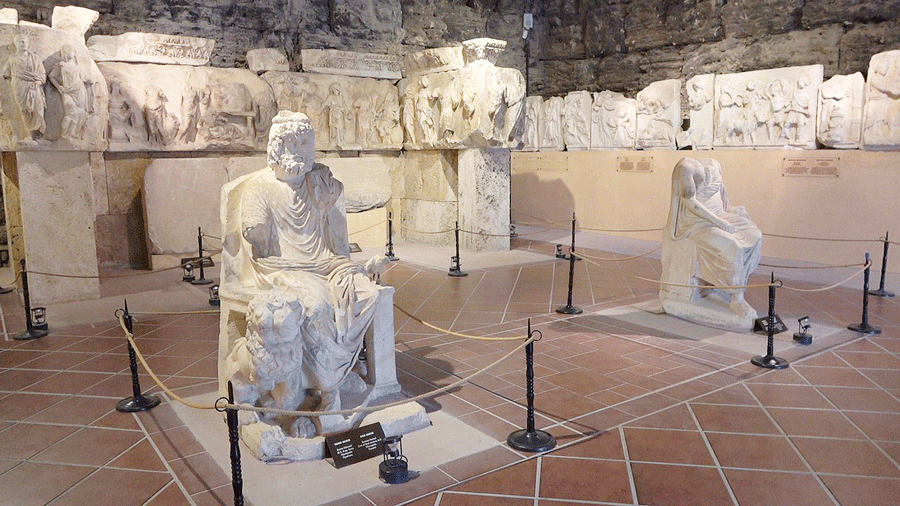Underground artifacts kept in storage
DENİZLİ

Home to the white haven Pamukkale and the ancient city of Hierapolis, the Aegean province of Denizli is visited by millions of tourists every year.
Only a small part of the artifacts that have been unearthed in the ancient city of Hierapolis during archaeological excavations can be displayed in the museum.
As the excavations are ongoing in the 2,500-year-old Hierapolis, which is on the UNESCO World Heritage list both as a cultural and natural treasure, the findings in the ancient city are on display at the Hierapolis (Pamukkale) Archaeology Museum.
Due to lack of space in the museum, nearly 40,000 artifacts cannot be displayed and are kept in storage areas. The ancient city, home to many civilizations for centuries and and its thousands of unique finds, therefore, cannot be promoted well.
Denizli Tourist Hotel and Operators Association (DENTUROD) President Gazi Murat Şen said that Denizli urgently needs a city museum. Stating that only a small number of the artifacts are exhibited, Şen added, “The ancient city of Hierapolis is one of the most important archaeological artifacts in our country. The city was established in the fourth century B.C. and survived until the seventh century B.C. It is written ‘holy city’ in the gate of the city. It was launched as a holy city because the tomb of St. Flipos is here, and people come here to recover their health. Since the ancient city of Hierapolis was home to very rich civilizations, a great deal of artifacts have been discovered here. The city needs an archaeology museum, a city museum.”
Some 40,000 artifacts in storage
Noting that nearly 40,000 finds were unearthed during excavations in Hierapolis but since the museum area is not large, only a small part can be exhibited, Şen said the following:
“These artifacts should be displayed for visitors, who are charmed by Pamukkale’s travertines, to enjoy archaeology. We know that some 40,000 works are waiting in the storages, and this number is enough to fill four to five museums, at least. But at first, an archaeology museum should be established here. This museum and the arrangement of walking routes will also increase the number of tourists visiting the region.”
Tourist attractions
Thanks to its thermal resources, Denizli is considered has been a thermal therapy center since ancient times. An important medical center during the Roman era, the city has a major place in health tourism with its calcium- and iron-rich red waters, which also contain different minerals.
Cleopatra’s Pool, where ancient Egyptian Queen Cleopatra bathed according to a myth, in Hierapolis, gives visitors a thrill from swimming while surrounded by a 2,000-year-old column and marble ruins. The pool formed naturally after the collapse of a series of columns in an earthquake in 692 A.D., which caused thermal water to accumulate.
The ancient city of Hierapolis, which has many temples and other religious structures in it, also attracts visitors. In front of the ancient theater, visitors first meet the “gate to hell,” which was unearthed in 2013 and is also called “gate to the dead country” in ancient sources.
















